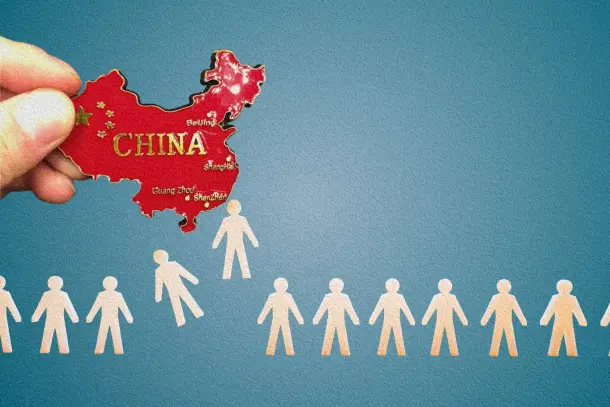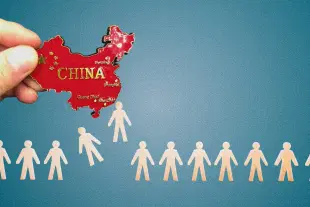Economy
Courting Geniuses: How China's 'Thousand Talents' Strategy Is Fuelling Its Ascent
Amit Mishra
Jun 27, 2025, 11:55 AM | Updated Aug 03, 2025, 09:40 PM IST
Save & read from anywhere!
Bookmark stories for easy access on any device or the Swarajya app.


For decades, the US has attracted the best and the brightest from all over the world, due to superior research funding, infrastructure, and career opportunities.
However, with China vying with the US for technological domination in the great technology race of the 21st century, it is only fitting to examine how Beijing is methodically fortifying its ranks of highly skilled talent pool.
At the heart of this ambitious quest lies an intricate network of over 200 state-sponsored talent recruitment programmes, purpose-built to draw the sharpest scientific minds to the country. Among these, the most prominent ones have been the Thousand Talents Plan and its youth branch, China’s Young Thousand Talents (YTT) programme.
The story traces back to 2008, when Li Yuanchao, then director of the Organisation Department of the Chinese Communist Party, launched the Thousand Talents Plan (TTP). Li hoped to convince 2,000 of China’s best brains to take the plunge and return full-time to their motherland. Li hoped their return would liberalise China’s scientific establishment and create an “innovative society”.
What began as a bold initiative to lure back leading Chinese scientists, academics and entrepreneurs scattered across the globe evolved to encompass younger talent and foreign scientists in 2011.
According to a succinct official notice from that year, the programme set an ambitious goal: to attract 50 to 100 foreign experts each year over roughly a decade, ultimately assembling a cadre of 500 to 1,000 world-class international experts to advance China’s strategic priorities.
The goal of the programme is “to attract and support high-level talent from overseas, over the next 5 to 10 years, to innovate and form companies around national key innovation projects, key disciplines and key laboratories … in line with national development goals”. This information used to be on the official TTP site before being removed recently.
Since its launch in 2008, the programme has reportedly drawn back around 7,000 Chinese scientists, academics, and entrepreneurs from overseas, reinforcing China’s domestic talent pool with seasoned expertise. It has also succeeded in attracting hundreds of foreign specialists to join China’s research and innovation drive.
Those selected are welcomed with generous incentives: a starting bonus of one million yuan and the opportunity to secure research funding ranging from three to five million yuan.
In addition to financial support, foreign scientists are offered an array of practical perks, including housing subsidies, meal allowances, relocation assistance, paid home visits, and subsidised education for their children — all designed to make their transition to China as smooth and rewarding as possible.
A central pillar of the TTP’s success has been the Chinese Communist Party’s active and strategic stewardship of talent development, encapsulated in the guiding maxim: “the Party manages talent” (Dang guan cai).
Yet, the Thousand Talents Plan is far more than a mere talent recruitment scheme. The high-profile, state-backed recruitment drive has long attracted scrutiny, especially from the United States, which views it as more than just an innocuous brain-gain exercise.
According to an unclassified assessment by the National Intelligence Council, the US intelligence body tasked with evaluating long-term global trends, the programme’s unadvertised goal is “to facilitate the legal and illicit transfer of US technology, intellectual property, and know-how” to China.
The U.S. Federal Bureau of Investigation (FBI) goes a step further, describing the programme as incentivising members to "steal foreign technologies needed to advance China’s national, military, and economic goals".
While various countries use talent plans, the Chinese government is the most prolific sponsor of these programmes, and the United States is one of China’s main targets, the FBI report notes.
The US, for its part, remains supportive of genuine international collaboration in scientific research and commercial innovation. But American businesses, universities, and laboratories should understand the potential risks and illegal conduct incentivised by Chinese talent plans and take steps to safeguard their trade secrets and intellectual property, reads the report.
Alarmed by mounting scrutiny and investigations in Washington that ensnared multiple scientists, the Thousand Talents Plan went dark in 2021 — only to quietly resurface in a new avatar by 2023.
China discreetly revived the initiative under a fresh name and format, as part of a broader push to accelerate its technological prowess, according to a Reuters analysis of more than 500 government documents spanning 2019 to 2023.
The revamped recruitment drive, reported in detail by Reuters for the first time, now dangles even more lucrative incentives: generous home-purchase subsidies and signing bonuses ranging from 3 to 5 million yuan (roughly $420,000 to $700,000).
The principal successor to the TTP is a programme named Qiming, which translates to Enlightenment, overseen by the Ministry of Industry and Information Technology, according to national and local policy documents, and online recruitment posts.
Unlike its high-profile predecessor, Qiming operates with far greater discretion. It actively recruits talent in strategically sensitive and classified fields — including semiconductors — but does not publicise the identities of its awardees and is notably absent from central government websites, the report said.
In the high-stakes contest for technological supremacy between the United States and China, talent is arguably the most prized currency of all.
For decades, America’s greatest edge has not just been its world-class institutions or deep wells of venture capital, but its unmatched ability to attract the brightest minds from every corner of the globe.
Chinese students alone account for nearly a quarter of all international students in the US, and they are disproportionately represented in STEM fields — the very disciplines that will shape the technologies and industries of tomorrow. Many of these talented graduates remain in the US, fuelling innovation in academia, research labs, and cutting-edge industries.
Yet, as Washington imposes tighter visa restrictions and scrutinises foreign researchers more closely, Beijing is seizing the moment to turn the tide. China is rolling out the proverbial red carpet through programmes like the Thousand Talents Plan to reverse the brain drain, transforming it into a deliberate brain gain.
Patrick Sinko, a distinguished professor at Rutgers University, aptly described the Thousand Talents Plan as a “cherry-picking brain drain” — a targeted strategy to handpick global expertise and redirect it to fuel China’s ascent up the technology value chain.




